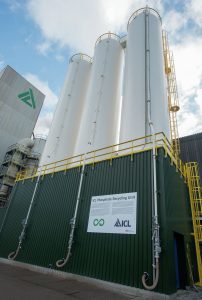
Fertilizer Industry News Roundup
Sirius Minerals is in talks with Anglo American about a £386 million cash offer for its UK-based polyhalite mine project.

Sirius Minerals is in talks with Anglo American about a £386 million cash offer for its UK-based polyhalite mine project.

Leading nitrogen and phosphate producers, including ICL, OCP and Yara, have all launched major sustainable fertilizer production projects. The aim is to incorporate recovered nutrients or low-carbon feedstocks into their manufacturing processes.

Canadian Press reports in December have highlighted concerns that the new tighter IMO rules on sulphur content of marine fuels, which came into force on January 1st, could lead to reduced demand for oil sands bitumen and syncrude. Canadian oil output has been steadily increasing over the past two decades, mainly due to expanded bitumen recovery, which now accounts for 50% of Canada’s 4.6 million bbl/d of oil production. However, the discount for Western Canadian Select bitumen blend crude prices versus North American benchmark West Texas Intermediate could almost double to $30/bbl in January, according to consultancy Wood Mackenzie, averaging US$23-24/bbl for most of 2020, as US and other refiners use less heavy, sour oil and switch to lower sulphur feeds to try and optimise low sulphur fuel oil (LSFO) production. However, reduced output from Canada’s competitors Mexico and Venezuela is currently helping to mitigate this. Oil sands producers with refineries or upgraders are expected to benefit as the new standards will increase demand for refined low-sulphur fuels. For example, Husky Energy has expanded its Lloydminster Upgrader to produce an extra 4,000 bbl/d of diesel, and reconfigured its Lima refinery in Ohio to use more heavy oil.

Leading EU phosphate and NPK fertilizer producers are profiled, including EuroChem, Fertiberia, Grupa Azoty, ICL, Prayon and Yara.